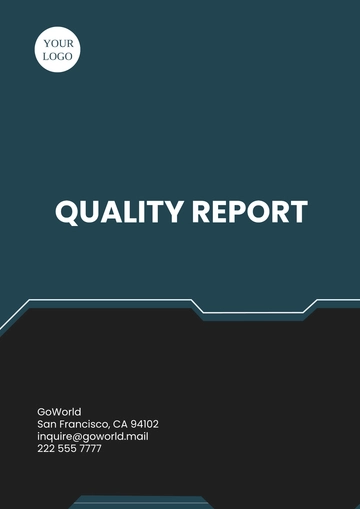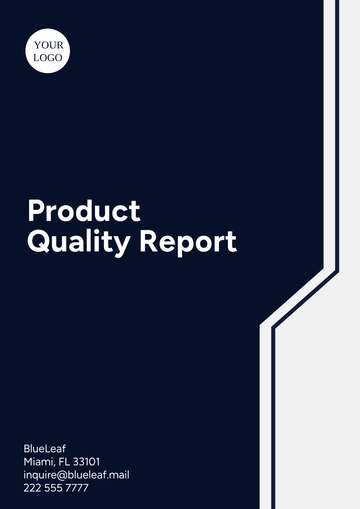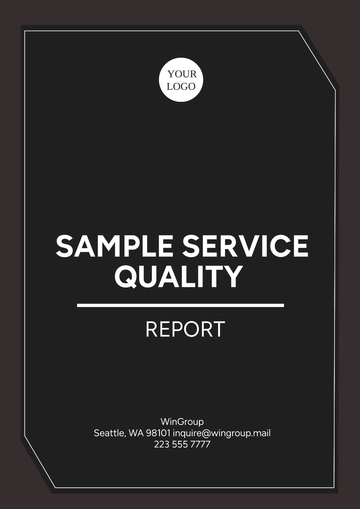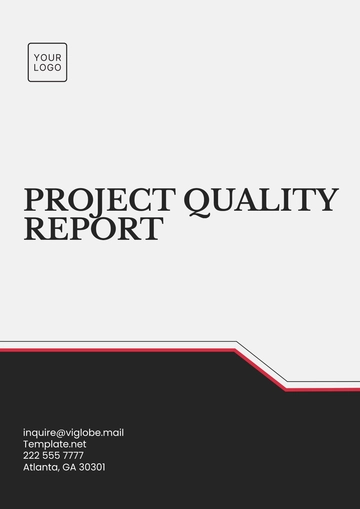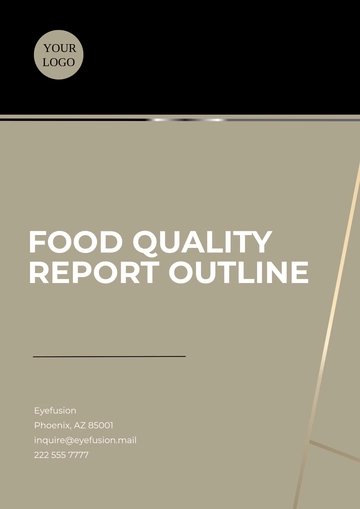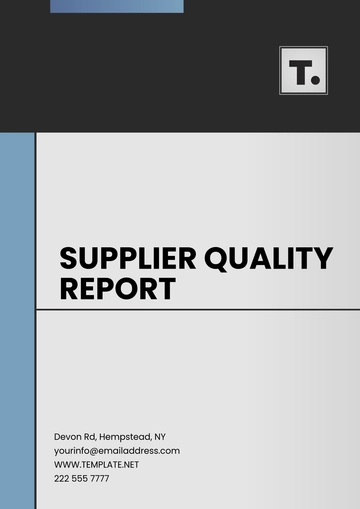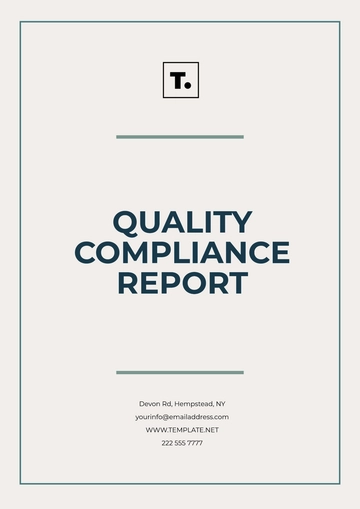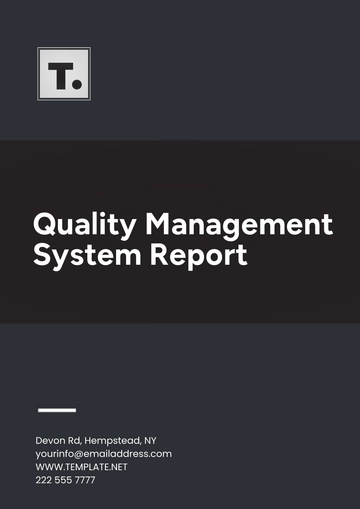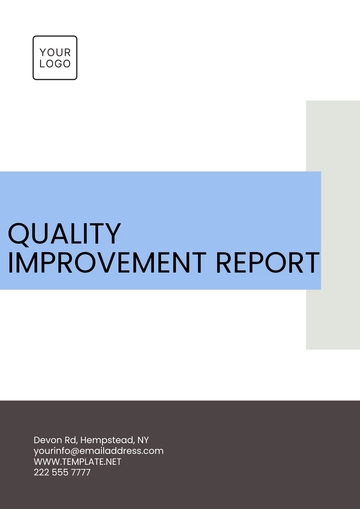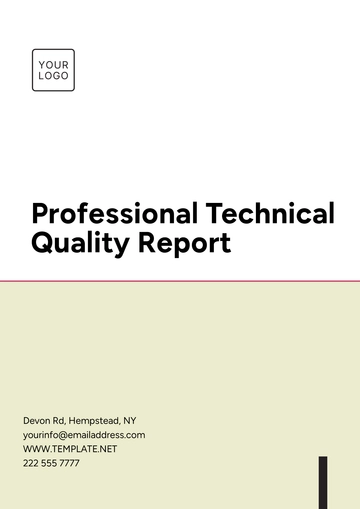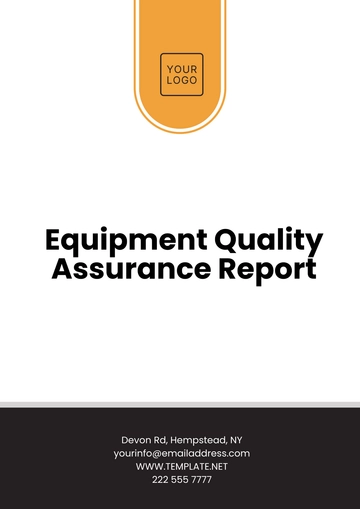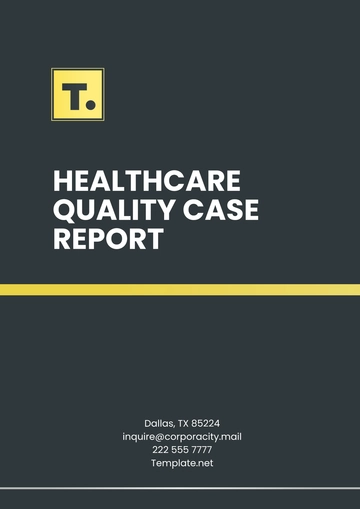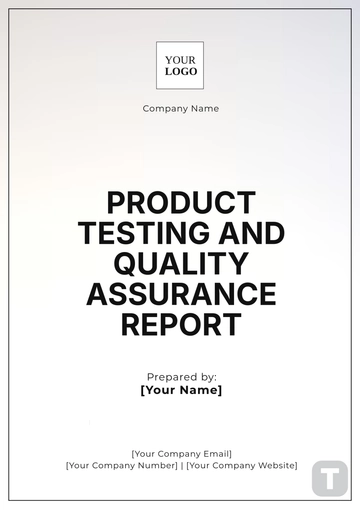Free Customer Feedback Quality Report
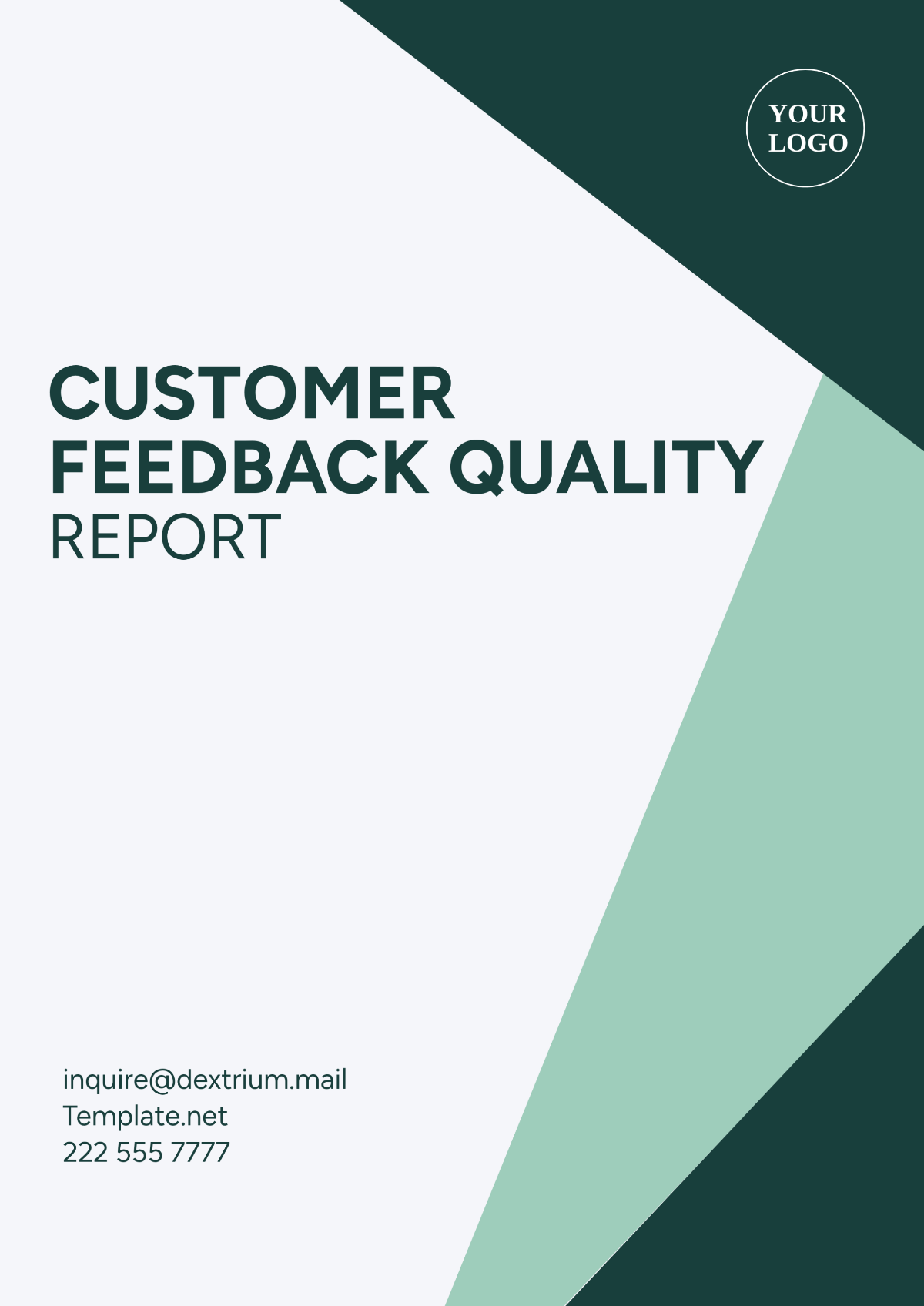
Introduction
The aim of this report is to provide a comprehensive analysis of the quality of customer feedback received over the past year. This analysis is intended to identify recurring themes, assess the overall sentiment, and make recommendations for improving customer satisfaction by addressing the issues identified through this feedback.
Methodology
The data for this report was collected from several sources, including online surveys, customer service interactions, and feedback forms. The feedback was categorized, analyzed using sentiment analysis tools, and then manually reviewed to ensure accuracy. The quantitative data was further supported by qualitative insights to provide a well-rounded overview of customer opinions.
Data Collection Sources
Online surveys: sent to customers post-purchase.
Customer service interactions: recorded from calls, emails, and chat logs.
Feedback Forms: Collected from product return forms and website feedback sections.
Analytical Tools Used
Sentiment Analysis Software: For detecting the overall sentiment of the feedback.
Text Analytics: To identify common keywords and themes.
Manual Review: Conducted for detailed insights and accuracy.
Findings
Overall Sentiment Analysis
The sentiment analysis revealed that approximately 65% of the feedback was positive, 20% was neutral, and 15% was negative. The positive feedback mainly highlighted quick service, professional customer support, and product quality, whereas negative feedback often revolved around shipping delays and product issues.
Sentiment | Percentage |
|---|---|
Positive | 65% |
Neutral | 20% |
Negative | 15% |
Recurring Themes
Several recurring themes emerged from the feedback that provide insights into customer preferences and pain points. Below, we categorize the themes into positive and negative categories.
Positive Themes
Quick and responsive customer service.
High-quality products exceeding expectations.
User-friendly online purchase process.
Negative Themes
Frequent shipping delays are impacting satisfaction.
Issues with defective products requiring returns.
Lack of variety in product line leading to limited choices.
Impact on Customer Retention
The analysis indicates that while a significant portion of our customer base is satisfied, the issues mentioned could potentially impact long-term customer retention. Customers experiencing recurring negative issues are less likely to return, highlighting the importance of addressing these concerns promptly.
Recommendations
Based on the insights gathered from this feedback analysis, the following recommendations are proposed to enhance customer satisfaction and retention:
Improve Shipping Efficiency
Partner with reliable logistics providers.
Implement proactive communication systems for shipping updates.
Consider offering expedited shipping options as standard.
Enhance Product Quality Control
Increase frequency of quality checks on product lines.
Establish a responsive channel for defective product complaints.
Develop an exchange/return program that minimizes customer inconvenience.
Expand Product Variety
Conduct market research to identify customer preferences.
Introduce new variations of high-demand products.
Regularly update inventory to reflect the latest trends and customer needs.
Conclusion
This report reveals that while customer satisfaction is generally positive, addressing the issues related to product quality, delivery, and variety can significantly boost customer loyalty and retention. By implementing the provided recommendations, the organization can enhance the customer experience, thereby solidifying its market position.
- 100% Customizable, free editor
- Access 1 Million+ Templates, photo’s & graphics
- Download or share as a template
- Click and replace photos, graphics, text, backgrounds
- Resize, crop, AI write & more
- Access advanced editor
The Customer Feedback Quality Report Template offered by Template.net is a versatile tool designed to help businesses assess and analyze customer satisfaction effectively. Fully customizable, this template allows you to tailor it to your specific needs. Downloadable and printable, it ensures seamless integration into your workflow. Additionally, it is editable in our AI Editor Tool, enabling quick and easy adjustments.
You may also like
- Sales Report
- Daily Report
- Project Report
- Business Report
- Weekly Report
- Incident Report
- Annual Report
- Report Layout
- Report Design
- Progress Report
- Marketing Report
- Company Report
- Monthly Report
- Audit Report
- Status Report
- School Report
- Reports Hr
- Management Report
- Project Status Report
- Handover Report
- Health And Safety Report
- Restaurant Report
- Construction Report
- Research Report
- Evaluation Report
- Investigation Report
- Employee Report
- Advertising Report
- Weekly Status Report
- Project Management Report
- Finance Report
- Service Report
- Technical Report
- Meeting Report
- Quarterly Report
- Inspection Report
- Medical Report
- Test Report
- Summary Report
- Inventory Report
- Valuation Report
- Operations Report
- Payroll Report
- Training Report
- Job Report
- Case Report
- Performance Report
- Board Report
- Internal Audit Report
- Student Report
- Monthly Management Report
- Small Business Report
- Accident Report
- Call Center Report
- Activity Report
- IT and Software Report
- Internship Report
- Visit Report
- Product Report
- Book Report
- Property Report
- Recruitment Report
- University Report
- Event Report
- SEO Report
- Conference Report
- Narrative Report
- Nursing Home Report
- Preschool Report
- Call Report
- Customer Report
- Employee Incident Report
- Accomplishment Report
- Social Media Report
- Work From Home Report
- Security Report
- Damage Report
- Quality Report
- Internal Report
- Nurse Report
- Real Estate Report
- Hotel Report
- Equipment Report
- Credit Report
- Field Report
- Non Profit Report
- Maintenance Report
- News Report
- Survey Report
- Executive Report
- Law Firm Report
- Advertising Agency Report
- Interior Design Report
- Travel Agency Report
- Stock Report
- Salon Report
- Bug Report
- Workplace Report
- Action Report
- Investor Report
- Cleaning Services Report
- Consulting Report
- Freelancer Report
- Site Visit Report
- Trip Report
- Classroom Observation Report
- Vehicle Report
- Final Report
- Software Report
